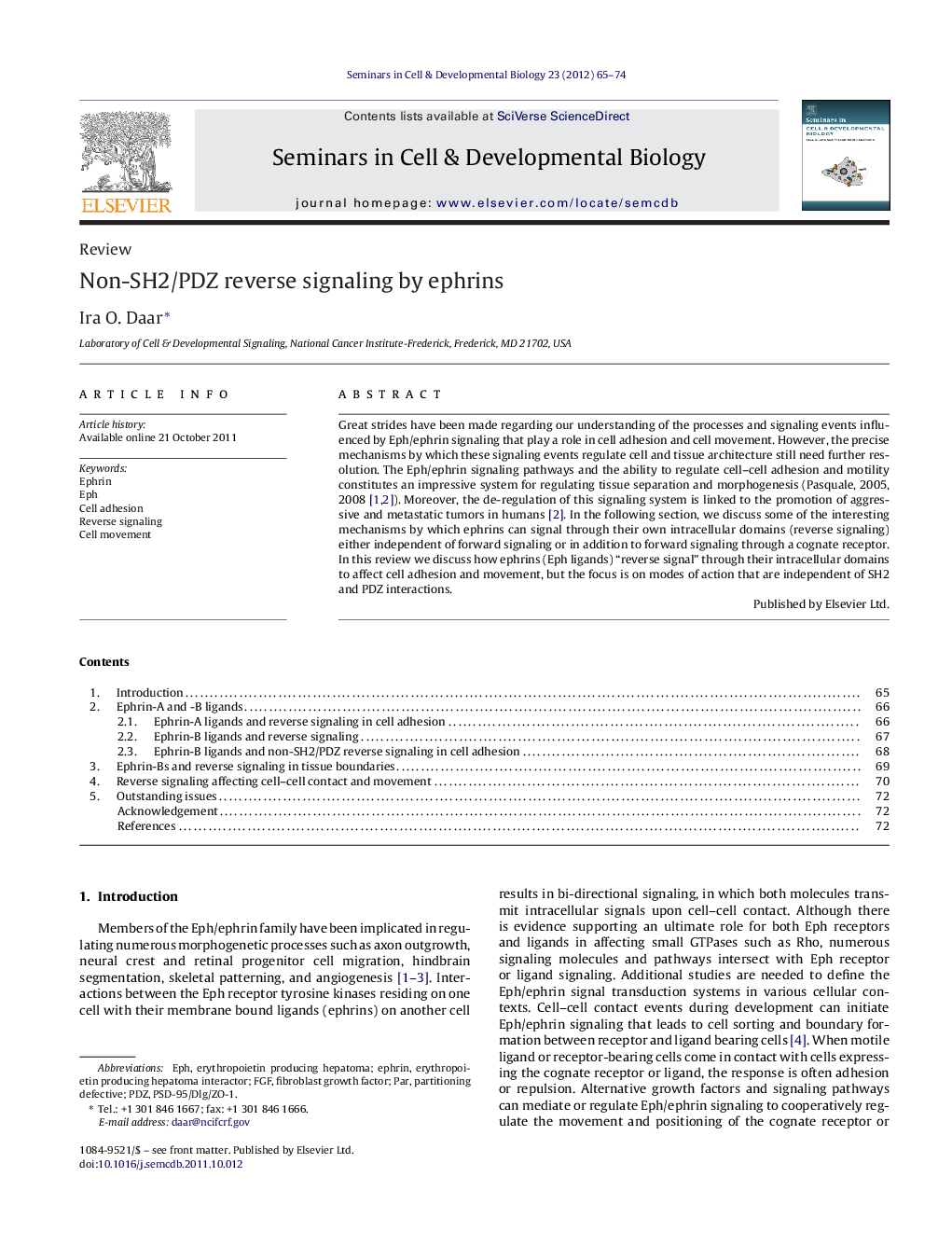| Article ID | Journal | Published Year | Pages | File Type |
|---|---|---|---|---|
| 2202769 | Seminars in Cell & Developmental Biology | 2012 | 10 Pages |
Great strides have been made regarding our understanding of the processes and signaling events influenced by Eph/ephrin signaling that play a role in cell adhesion and cell movement. However, the precise mechanisms by which these signaling events regulate cell and tissue architecture still need further resolution. The Eph/ephrin signaling pathways and the ability to regulate cell–cell adhesion and motility constitutes an impressive system for regulating tissue separation and morphogenesis (Pasquale, 2005, 2008 [1] and [2]). Moreover, the de-regulation of this signaling system is linked to the promotion of aggressive and metastatic tumors in humans [2]. In the following section, we discuss some of the interesting mechanisms by which ephrins can signal through their own intracellular domains (reverse signaling) either independent of forward signaling or in addition to forward signaling through a cognate receptor. In this review we discuss how ephrins (Eph ligands) “reverse signal” through their intracellular domains to affect cell adhesion and movement, but the focus is on modes of action that are independent of SH2 and PDZ interactions.
